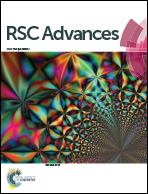Novel metal chelators thiosemicarbazones with activity at the σ2 receptors and P-glycoprotein: an innovative strategy for resistant tumor treatment†
Abstract
To combat the emergence of drug-resistance in tumors novel strategies are urgently needed. With this in mind we designed a novel class of thiosemicarbazones able to target simultaneously σ2 receptors and P-glycoprotein efflux pump while chelating metals such as iron. The combined effect of these targets would lead to the activation of multiple pathways to which resistant tumors are sensitive. Indeed, most of the novel thiosemicarbazones displayed antiproliferative activity in both parent (MCF7 breast adenocarcinoma and A549 lung carcinoma) and corresponding doxorubicin-resistant cells (MCF7dx and A549dx). A few compounds emerged for their potent antiproliferative activity or for their more potent effect in doxorubicin-resistant cells than in the parent ones, while other compounds emerged for their remarkable P-gp modulatory activity. These results pave the way for further studies on these targets in the oncology field, while the availability of promising molecules for resistant tumors treatment that warrant deeper investigations was increased.


 Please wait while we load your content...
Please wait while we load your content...